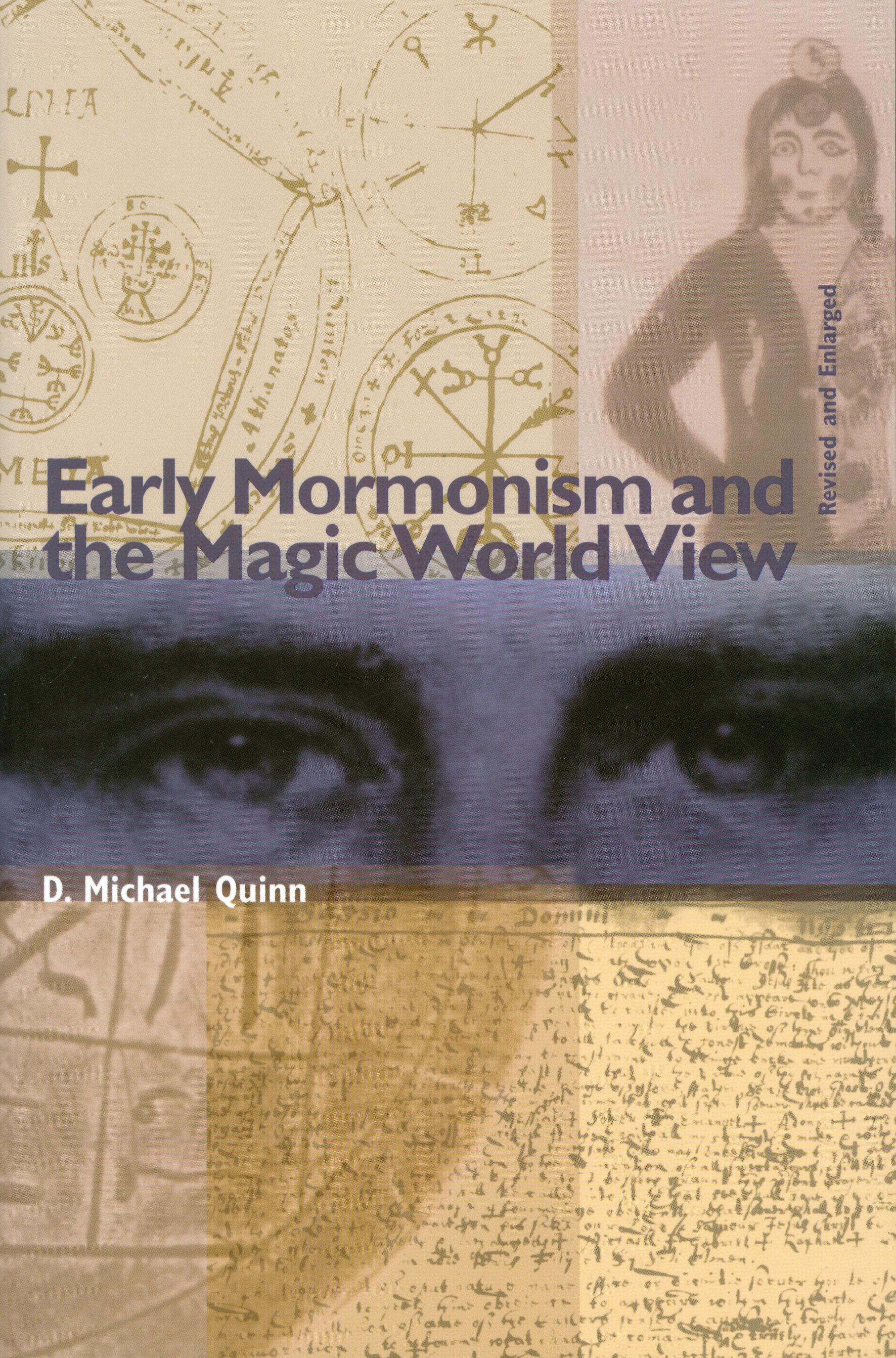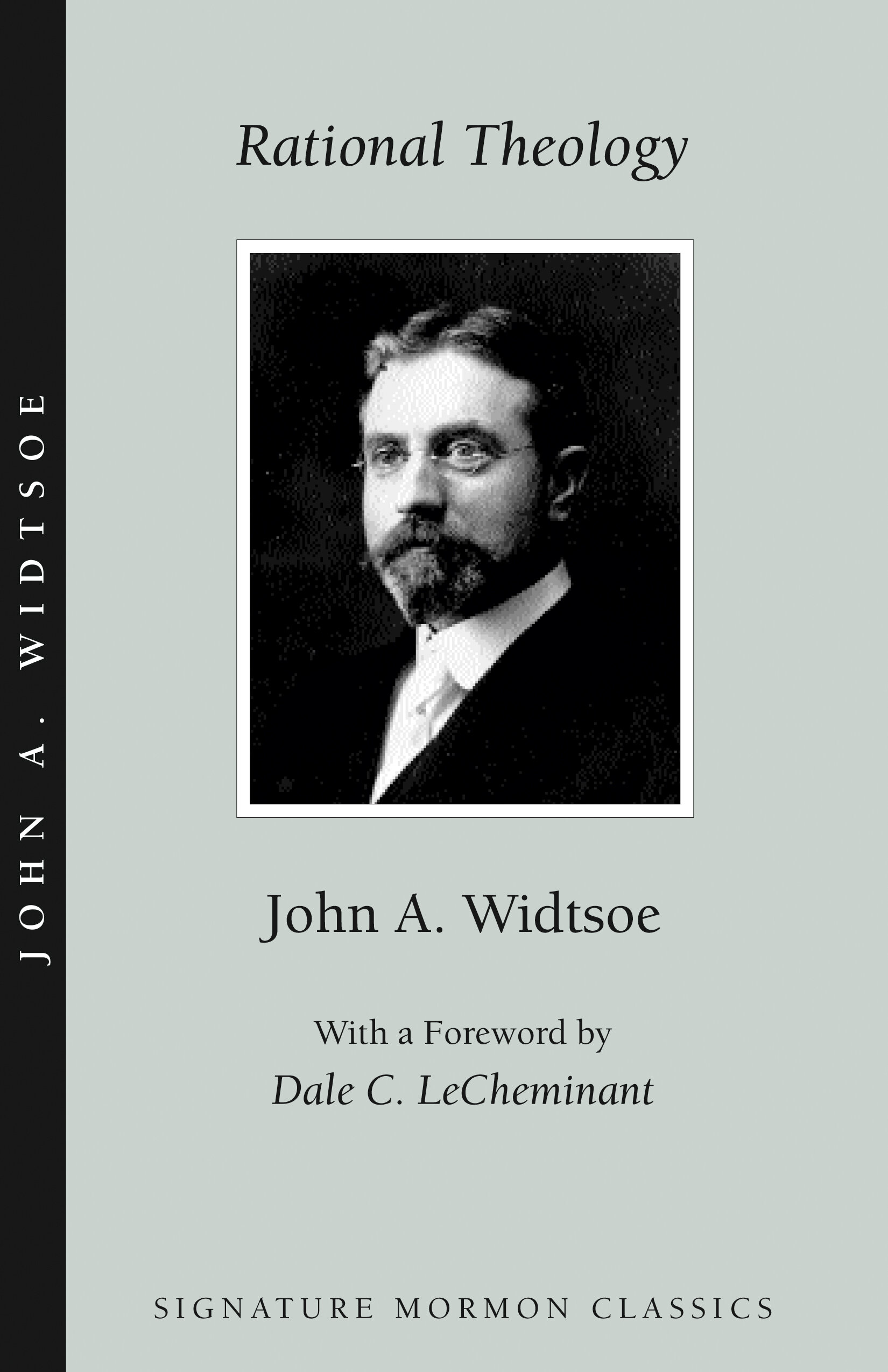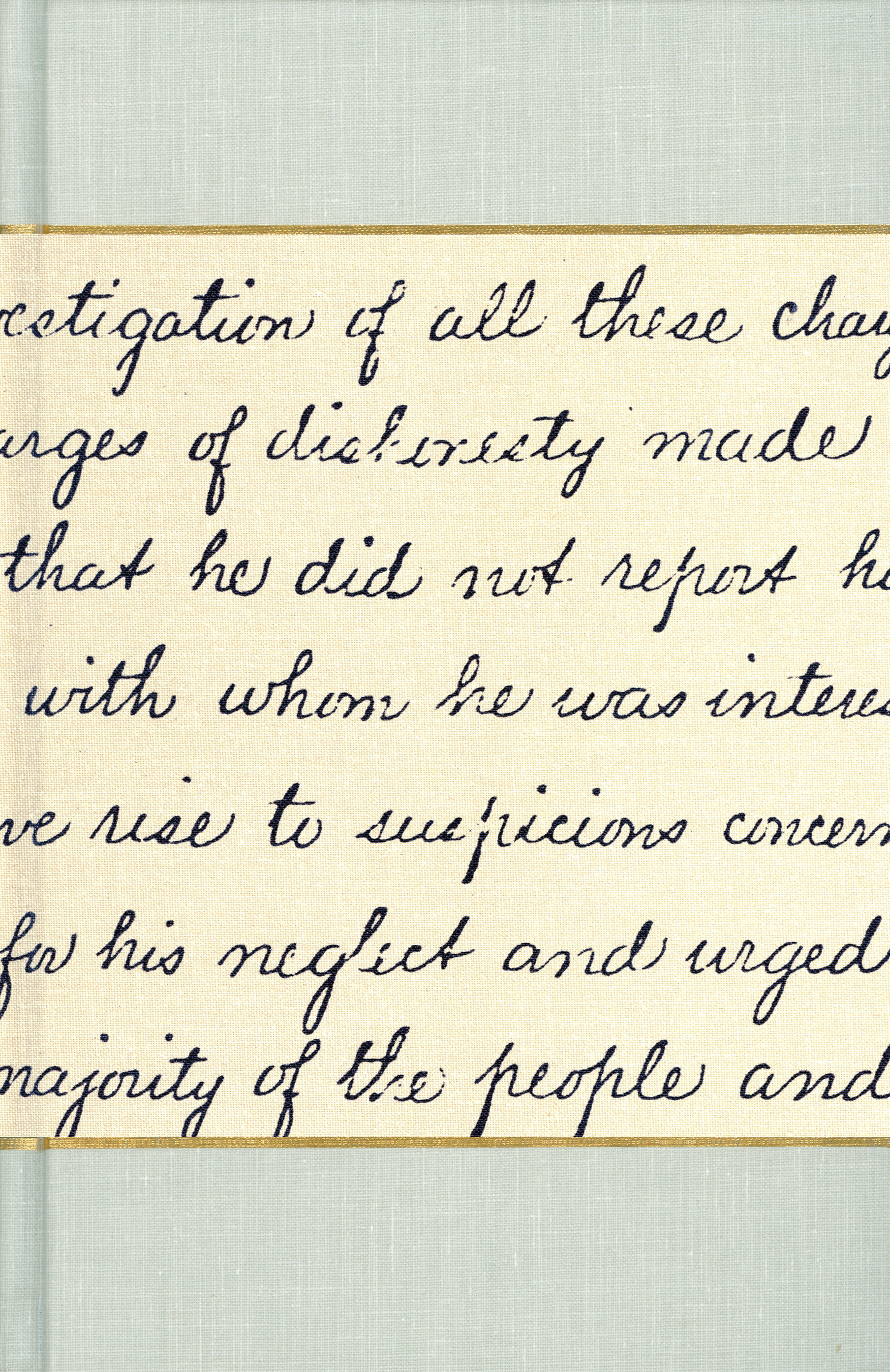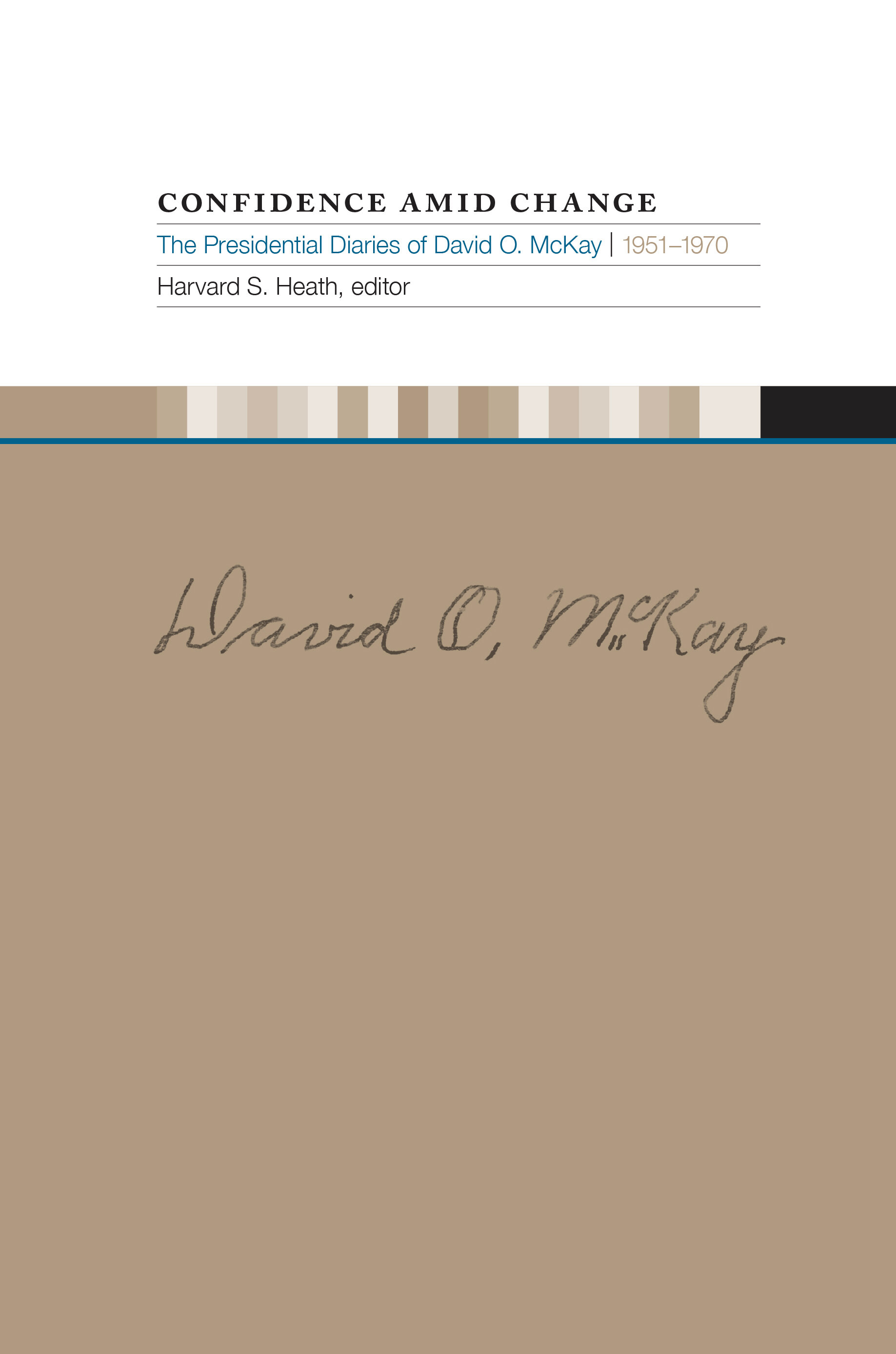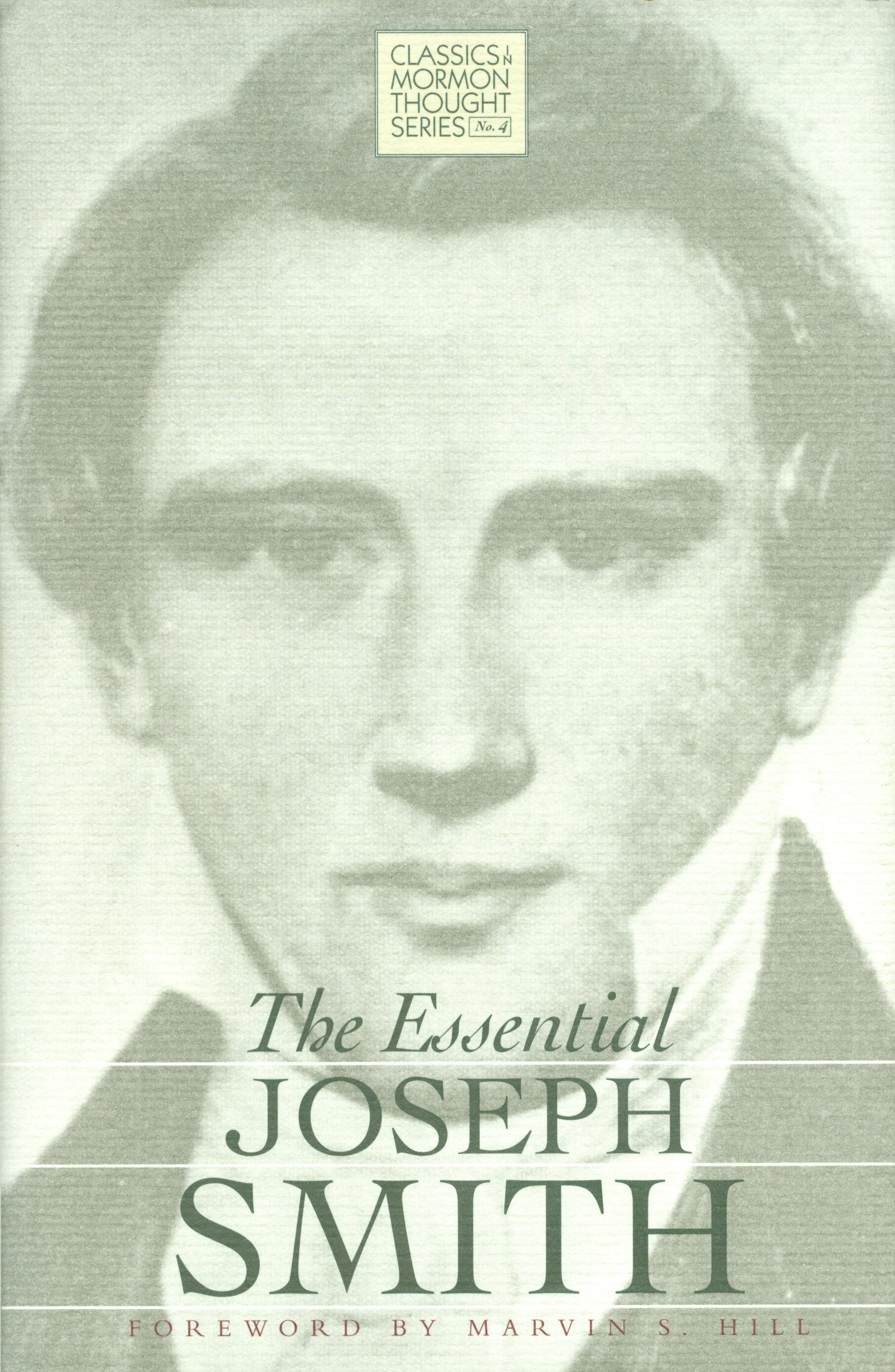Joseph Smith's Quorum of the Anointed, 1842–1845
Joseph Smith’s Quorum of the Anointed, 1842–1845:
A Documentary History
edited by Devery S. Anderson and Gary James Bergera
foreword by Todd Compton
The first Latter-day Saint temple ceremonies were performed, not in Kirtland, Ohio, but on the second floor of Joseph Smith’s Red Brick Store in Nauvoo, Illinois. For nearly four years beginning in 1842, the prophet’s modest mercantile functioned as the de facto temple site of the first washings, anointings, endowments, and sealings. In contrast, the grand edifice known as the Nauvoo Temple was in operation for only two months before the Saints left Illinois for the West.
Preparations to initiate the first members of Joseph Smith’s Quorum of the Anointed, or Holy Order, as it was also known, were made on May 3, 1842. The walls of the second level of the Red Brick Store were painted with garden-themed murals, the rooms fitted with carpets, potted plants, and a veil hung from the ceiling. All the while, the ground level continued to operate as Joseph Smith’s general mercantile.
In this companion volume to The Nauvoo Endowment Companies and The Development of LDS Temple Worship, 1846–2000: A Documentary History, the editors have assembled all available primary references to the Anointed Quorum and its regular gatherings, both in the Red Brick Store and elsewhere (women were initially washed and anointed in Emma Smith’s bedroom and then escorted to the store) prior to the opening of the Nauvoo Temple. The sources include excerpts from the diaries of William Clayton, Joseph Fielding, Zina D. H. Jacobs, Heber C. Kimball, John Taylor, Willard Richards, George A. Smith, Joseph Smith, Wilford Woodruff, and Brigham Young; autobiographies and reminiscences by Joseph C. Kingsbury, George Miller, and Mercy Fielding Thompson; letters from Vilate Kimball and Lucius N. Scoville; the Manuscript History of Brigham Young; General Record of the Seventies, Book B; Bathsheba W. Smith’s unedited testimony from the 1892 Temple Lot Case; other manuscripts such as the Historian’s Office Journal and “Meetings of Anointed Quorum”; and published records such as the History of the Church, Latter Day Saints’ Messenger and Advocate and Times and Seasons.
from the jacket flap:
Despite the secrecy imposed upon members of the Anointed Quorum, word of the gatherings above Joseph Smith’s store soon spread. In one instance, housekeeper Maria Jane Johnston helped prepare the special ceremonial clothing for John Smith to wear at the group’s meetings. In another, Ebenezer Robinson innocently opened the upstairs door at the mercantile and was startled to see church apostle John Taylor in a long white robe and “turban,” carrying a sword. Only Nauvoo’s elite were invited to participate in these new ceremonies—never more than ninety individuals and even fewer during Joseph Smith’s lifetime—and, as the editors of the current volume write, only those who had been introduced to the prophet’s doctrine of plural marriage.
An unusual aspect of the Quorum of the Anointed, compared to the membership in the Nauvoo Masonic Lodge, was that women were initiated as regular members. However, the women effectively disappear after Brigham Young’s assumption of leadership in 1844 following Joseph Smith’s death, and remain virtually absent until the Nauvoo Temple is completed nearly a year and a half later. Readers will also note some of the differences in protocol between what Smith instigated and what Young eventually settled on, for instance that members could be washed and anointed repeatedly but were “endowed” only once. There were not yet proxy ordinances.
Among Latter-day Saints today, temple worship is a sensitive topic; but the editors of this volume do not reveal anything that would be considered invasive or indelicate. In fact, the accounts, which come almost exclusively from the early LDS leadership itself, manifest discretion about what to report.
Never before have these primary, authoritative sources been correlated by date for comparison and fuller understanding of the gradual development of the temple ceremonies. Readers may find an added benefit in discovering some of their own ancestors’ names included in these records; but in fact, anyone interested in LDS temple worship will find this compilation of primary documents to be invaluable.
hardback: $25.00 | ebook: $9.99
Joseph Smith’s Quorum of the Anointed, 1842–1845:
A Documentary History
edited by Devery S. Anderson and Gary James Bergera
foreword by Todd Compton
The first Latter-day Saint temple ceremonies were performed, not in Kirtland, Ohio, but on the second floor of Joseph Smith’s Red Brick Store in Nauvoo, Illinois. For nearly four years beginning in 1842, the prophet’s modest mercantile functioned as the de facto temple site of the first washings, anointings, endowments, and sealings. In contrast, the grand edifice known as the Nauvoo Temple was in operation for only two months before the Saints left Illinois for the West.
Preparations to initiate the first members of Joseph Smith’s Quorum of the Anointed, or Holy Order, as it was also known, were made on May 3, 1842. The walls of the second level of the Red Brick Store were painted with garden-themed murals, the rooms fitted with carpets, potted plants, and a veil hung from the ceiling. All the while, the ground level continued to operate as Joseph Smith’s general mercantile.
In this companion volume to The Nauvoo Endowment Companies and The Development of LDS Temple Worship, 1846–2000: A Documentary History, the editors have assembled all available primary references to the Anointed Quorum and its regular gatherings, both in the Red Brick Store and elsewhere (women were initially washed and anointed in Emma Smith’s bedroom and then escorted to the store) prior to the opening of the Nauvoo Temple. The sources include excerpts from the diaries of William Clayton, Joseph Fielding, Zina D. H. Jacobs, Heber C. Kimball, John Taylor, Willard Richards, George A. Smith, Joseph Smith, Wilford Woodruff, and Brigham Young; autobiographies and reminiscences by Joseph C. Kingsbury, George Miller, and Mercy Fielding Thompson; letters from Vilate Kimball and Lucius N. Scoville; the Manuscript History of Brigham Young; General Record of the Seventies, Book B; Bathsheba W. Smith’s unedited testimony from the 1892 Temple Lot Case; other manuscripts such as the Historian’s Office Journal and “Meetings of Anointed Quorum”; and published records such as the History of the Church, Latter Day Saints’ Messenger and Advocate and Times and Seasons.
from the jacket flap:
Despite the secrecy imposed upon members of the Anointed Quorum, word of the gatherings above Joseph Smith’s store soon spread. In one instance, housekeeper Maria Jane Johnston helped prepare the special ceremonial clothing for John Smith to wear at the group’s meetings. In another, Ebenezer Robinson innocently opened the upstairs door at the mercantile and was startled to see church apostle John Taylor in a long white robe and “turban,” carrying a sword. Only Nauvoo’s elite were invited to participate in these new ceremonies—never more than ninety individuals and even fewer during Joseph Smith’s lifetime—and, as the editors of the current volume write, only those who had been introduced to the prophet’s doctrine of plural marriage.
An unusual aspect of the Quorum of the Anointed, compared to the membership in the Nauvoo Masonic Lodge, was that women were initiated as regular members. However, the women effectively disappear after Brigham Young’s assumption of leadership in 1844 following Joseph Smith’s death, and remain virtually absent until the Nauvoo Temple is completed nearly a year and a half later. Readers will also note some of the differences in protocol between what Smith instigated and what Young eventually settled on, for instance that members could be washed and anointed repeatedly but were “endowed” only once. There were not yet proxy ordinances.
Among Latter-day Saints today, temple worship is a sensitive topic; but the editors of this volume do not reveal anything that would be considered invasive or indelicate. In fact, the accounts, which come almost exclusively from the early LDS leadership itself, manifest discretion about what to report.
Never before have these primary, authoritative sources been correlated by date for comparison and fuller understanding of the gradual development of the temple ceremonies. Readers may find an added benefit in discovering some of their own ancestors’ names included in these records; but in fact, anyone interested in LDS temple worship will find this compilation of primary documents to be invaluable.
hardback: $25.00 | ebook: $9.99
Joseph Smith’s Quorum of the Anointed, 1842–1845:
A Documentary History
edited by Devery S. Anderson and Gary James Bergera
foreword by Todd Compton
The first Latter-day Saint temple ceremonies were performed, not in Kirtland, Ohio, but on the second floor of Joseph Smith’s Red Brick Store in Nauvoo, Illinois. For nearly four years beginning in 1842, the prophet’s modest mercantile functioned as the de facto temple site of the first washings, anointings, endowments, and sealings. In contrast, the grand edifice known as the Nauvoo Temple was in operation for only two months before the Saints left Illinois for the West.
Preparations to initiate the first members of Joseph Smith’s Quorum of the Anointed, or Holy Order, as it was also known, were made on May 3, 1842. The walls of the second level of the Red Brick Store were painted with garden-themed murals, the rooms fitted with carpets, potted plants, and a veil hung from the ceiling. All the while, the ground level continued to operate as Joseph Smith’s general mercantile.
In this companion volume to The Nauvoo Endowment Companies and The Development of LDS Temple Worship, 1846–2000: A Documentary History, the editors have assembled all available primary references to the Anointed Quorum and its regular gatherings, both in the Red Brick Store and elsewhere (women were initially washed and anointed in Emma Smith’s bedroom and then escorted to the store) prior to the opening of the Nauvoo Temple. The sources include excerpts from the diaries of William Clayton, Joseph Fielding, Zina D. H. Jacobs, Heber C. Kimball, John Taylor, Willard Richards, George A. Smith, Joseph Smith, Wilford Woodruff, and Brigham Young; autobiographies and reminiscences by Joseph C. Kingsbury, George Miller, and Mercy Fielding Thompson; letters from Vilate Kimball and Lucius N. Scoville; the Manuscript History of Brigham Young; General Record of the Seventies, Book B; Bathsheba W. Smith’s unedited testimony from the 1892 Temple Lot Case; other manuscripts such as the Historian’s Office Journal and “Meetings of Anointed Quorum”; and published records such as the History of the Church, Latter Day Saints’ Messenger and Advocate and Times and Seasons.
from the jacket flap:
Despite the secrecy imposed upon members of the Anointed Quorum, word of the gatherings above Joseph Smith’s store soon spread. In one instance, housekeeper Maria Jane Johnston helped prepare the special ceremonial clothing for John Smith to wear at the group’s meetings. In another, Ebenezer Robinson innocently opened the upstairs door at the mercantile and was startled to see church apostle John Taylor in a long white robe and “turban,” carrying a sword. Only Nauvoo’s elite were invited to participate in these new ceremonies—never more than ninety individuals and even fewer during Joseph Smith’s lifetime—and, as the editors of the current volume write, only those who had been introduced to the prophet’s doctrine of plural marriage.
An unusual aspect of the Quorum of the Anointed, compared to the membership in the Nauvoo Masonic Lodge, was that women were initiated as regular members. However, the women effectively disappear after Brigham Young’s assumption of leadership in 1844 following Joseph Smith’s death, and remain virtually absent until the Nauvoo Temple is completed nearly a year and a half later. Readers will also note some of the differences in protocol between what Smith instigated and what Young eventually settled on, for instance that members could be washed and anointed repeatedly but were “endowed” only once. There were not yet proxy ordinances.
Among Latter-day Saints today, temple worship is a sensitive topic; but the editors of this volume do not reveal anything that would be considered invasive or indelicate. In fact, the accounts, which come almost exclusively from the early LDS leadership itself, manifest discretion about what to report.
Never before have these primary, authoritative sources been correlated by date for comparison and fuller understanding of the gradual development of the temple ceremonies. Readers may find an added benefit in discovering some of their own ancestors’ names included in these records; but in fact, anyone interested in LDS temple worship will find this compilation of primary documents to be invaluable.
hardback: $25.00 | ebook: $9.99
Devery S. Anderson has published in Dialogue: A Journal of Mormon Thought (winner of the Dialogue “Best Article in History” Award for 1999), the Journal of Mormon History, and elsewhere. His book, Emmett Till: The Murder That Shocked the World and Propelled the Civil Rights Movement was published by the University Press of Mississippi in 2015. He holds a degree in history from the University of Utah and is finishing a master’s in publishing at the George Washington University. He lives in Salt Lake City.
Gary James Bergera is managing director of the Smith-Pettit Foundation in Salt Lake City, the company director of Signature Books, and former managing editor of Dialogue: A Journal of Mormon Thought. He is co-author of Brigham Young University: A House of Faith, editor of Line Upon Line: Essays on Mormon Doctrine, The Autobiography of B. H. Roberts, Statements of the LDS First Presidency, and Confessions of a Mormon Historian: The Diaries of Leonard J. Arrington, 1971–1997. He is co-editor of companion volumes of Joseph Smith’s Quorum of the Anointed, 1842-1845, and The Nauvoo Endowment Companies, 1845-1846, and On Desert Trails with Everett Ruess. He is a contributing author in The Prophet Puzzle: Interpretive Essays on Joseph Smith; Religion, Feminism, and Freedom of Conscience: A Mormon/Humanist Dialogue; and The Search for Harmony: Essays on Science and Mormonism. He is also the recipient of a Best Article Award from the Mormon History Association. He is currently on the boards of the Mormon History Association and the John Whitmer Historical Society.
Todd Compton (PhD, UCLA) is the author of In Sacred Loneliness: The Plural Wives of Joseph Smith; co-editor of Mormonism and Early Christianity (a compilation of Hugh Nibley’s writings) and A Widow’s Tale: The 1884–1896 Diaries of Helen Mar Kimball Whitney; and a contributor to the Encyclopedia of Mormonism, Excavating Mormon Pasts: The New Historiography of the Last Half Century, Reconsidering ‘No Man Knows My History’: Fawn M. Brodie and Joseph Smith in Retrospect, and Women and Authority: Re-emerging Mormon Feminism.
Documentary History, History
ISBN: 978-1-56085-186-8


